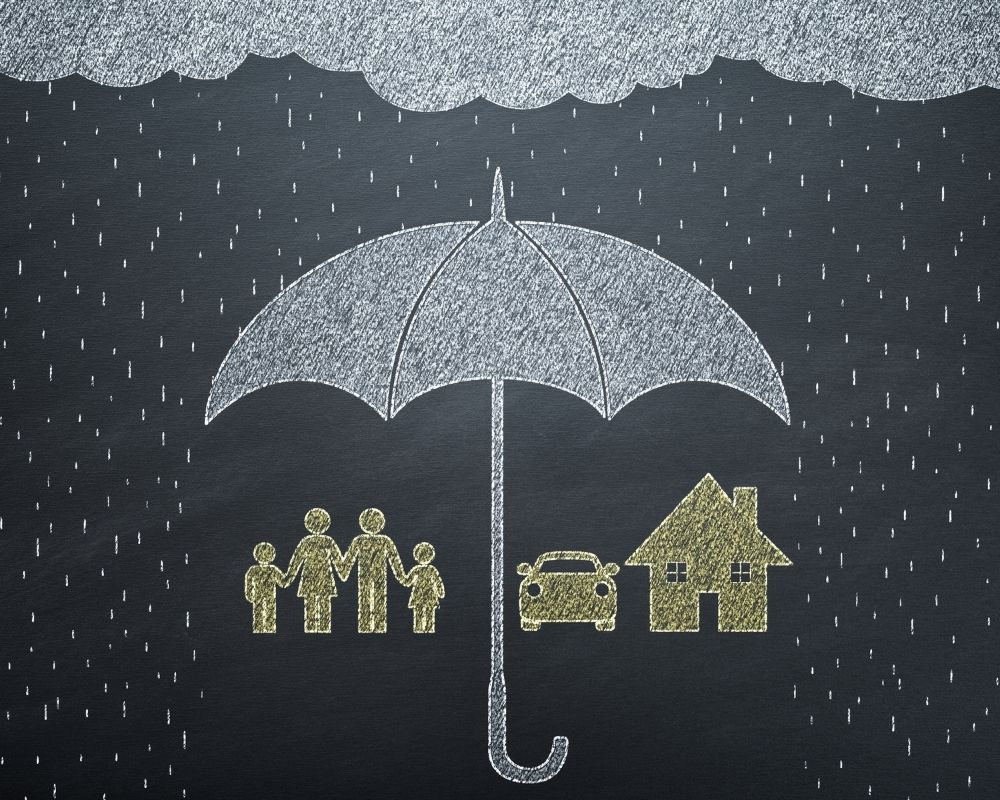
Water damage insurance is a type of protection provided in most homeowners insurance policies against sudden and accidental water damage.
It describes many probable losses caused by water entering where destructive processes such as rotting of wood, mould growth, bacteria growth, rusting of steel, swelling of composite lumber, de-laminating of materials such as plywood, etc. can attack a material or system.
Water Damage Insurance: An Overview
As water damage insurance does not cover negligence, many types of water damage to real property can and should be avoided through proper maintenance.
So that, experts suggest that homeowners inspect and replace worn pipe fittings and hose connections to all household appliances that use water at least once a year.
Although water damage insurance does not cover damage resulting from the homeowners’ negligence or the failure to maintain the home in good repair, water damage insurance provides coverage to homeowners against certain forms of water damage.
Most policies will not cover water damage that occurs due to negligence nor from floodwaters.
But water damage insurance eligible for burst pipes, plumbing failures, and toilet problems are the leading suitable water damage hazards.
Water damage is a significant factor in homeowners insurance claims. It’s five times more likely your home or company will be damaged by water than you’ll have a claim for theft, and water damage is seven times more prevalent than fire.
A few companies use Flow-based technologies to provide whole-house leak protection systems. Several insurance firms offer discounts to policyholders who install a whole-house leak protection system.
Types of Water Damage Claims
1. Frozen pipes, which can burst due to a buildup in water pressure caused by freezing water in an adjacent portion of the pipe, and when the supply system material fails and leads to a leaky or bursting pipe, are the most common prevalent types of plumbing supply system failures.
2. Toilet failures were the second leading cause of water damage, either from the water supply line or from the toilet backing up into the house, followed by water heaters failing and causing water to enter the home.
Insurance coverage
As far as insurance coverage is concerned, damage caused by flood damage is defined as surface water incursion into a structure, and it is typically excluded from regular homeowners’ insurance coverage.
Surface water is water that enters the dwelling from the surface of the ground because of inundation or insufficient drainage and causes loss to the dwelling. Coverage for surface water intrusion to the dwelling would usually require a separate flood insurance policy.
Special Considerations
The water damage is divided into three categories based on the level of contamination.
• Category 1. Refers to a supply of water that is categorized as “clean water” and does not represent a significant threat to humans. Broken water supply lines, tub or sink overflows, and appliance problems involving water supply lines are all examples.
• Category 2. When consumed or even exposed to, a supply of water that includes a considerable amount of chemical, biological, or physical pollutants produces pain or disease—known as “grey water”. This type transports bacteria as well as their nutrition. Toilet bowls with pee (but no excrement), sump pump failures, hydrostatic failure seepage, and water discharge from dishwashers or washing machines are also examples.
• Category 3. It’s referred to as “black water” and is quite unclean. Unsanitary agents, dangerous bacteria, and fungus are present in this water, causing significant discomfort or illness. Contaminated water sources that affect the indoor environment fall into the Type 3 category.
This category includes water sources from sewage, seawater, rising water from rivers or streams, storm surge, ground surface water or standing water.
Category 2 Water or Grey Water that is not promptly removed from the structure and may remain stagnant may be reclassified as Category 3 Water.
Water damage can originate from different sources such as a broken dishwasher hose, a washing machine overflow, a dishwasher leakage, broken/leaking pipes, floodwaters, groundwater seepage, leaking roof, windows, doors, siding, and clogged toilets.
Final Conclusion
Water damage is both pervasive and capable of compounding the damage over time. It can lead to numerous claims and cause-related types of damage and be caused related types of damage, such as fire or flood. One thing is sure: ignoring it compounds it. The wise person will immediately investigate how to mitigate the damages and either seek relief or minimize the damages that must be paid to others. Well, thought-out plans for insurance and prevention must be created and maintained over the years.
If you have an idea or are tired of finding a software solution company, don’t worry; you are in the correct place.
Come and join us. We are informatics, a company providing the best software solutions over three decades and offering custom software development based on your organization’s needs.
We specialize in insurance solutions and services through years of experience and knowledge in the industry.
If you wish to know more about our signature product InfoIns, keep in touch with us today!
Written by Siththy Waseema
